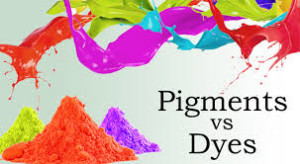
Colour of materials is taken so much for granted by us today that we rarely give a thought to how it originates, how it is perceived and how it affects us and the world around us. The versatility of colour remains undisputed though; it is powerful enough to make a statement, generate an atmosphere or demand a response. Colour plays a major role in influencing our emotions, responses and actions towards people, things and ideas.
The colour in today’s materials comes from colorants that include dyes and pigments. Since ancient times, colorants have been used for dyeing, though in those times they were obtained from nature. The discovery of producing colour synthetically from coal tar and petroleum distillates led to a revolution in the colorant industry. A wide variety of dyes and pigments came to be available in the market with each of them having their own segments of application.
Dyes and pigments differ from one another with the major difference being the water-solubility of dyes unlike its counterpart, the pigments. Dyes have affinity for the substrate and are able to be absorbed or chemically react with the substrate. There are several factors that determine the category into which the dye falls like its chemical structure, origin, nuclear structure, application methods and its industrial classification. One example of dye and its corresponding substrate that can be given here is direct dyes and its substrates being cellulosic, cotton and blends. The dyeing techniques of today have also increased manifold and include batik dyeing, bale dyeing, beam dyeing, chain dyeing and speck dyeing etc. Though dyestuffs are used in varied applications today, a large part of it goes to the textile industry in the country while the remaining is used by paper and leather industry.
Pigments as against dyes are oil and water insoluble. Pigments are responsible for lending color to several items; however, its largest consumer is the paints, printing inks and coating industry. Classification of pigments is done based on their chemical composition, color, source and application. Based on chemical composition, pigments are divided into organic pigments and inorganic pigments. Pigments are divided into natural and synthetic based on their source of procurement. Besides these categories, pigments are also classified into extender, coloring and functional pigments depending upon their application.
As for the organic pigments, innumerable numbers of them exist, many of which are hardly used today or used rarely. Organic pigment manufacturers would list Phthalocyanine pigments, azo pigments, quinacridone pigments and lake pigments as the most commonly used ones in their category. These categories provide innumerable shades and hues for various applications with each category contributing differing colors. Pigment blue manufacturers will be more concerned therefore with production of Pthalocyanine category of pigments which give the green and blue shades.
The terms dyes and pigments are often used loosely to refer to colors seen in fabrics, food, paints etc but each of them are distinct from one another. In any case, the fact remains that both of them go to make the present day world much more colorful!